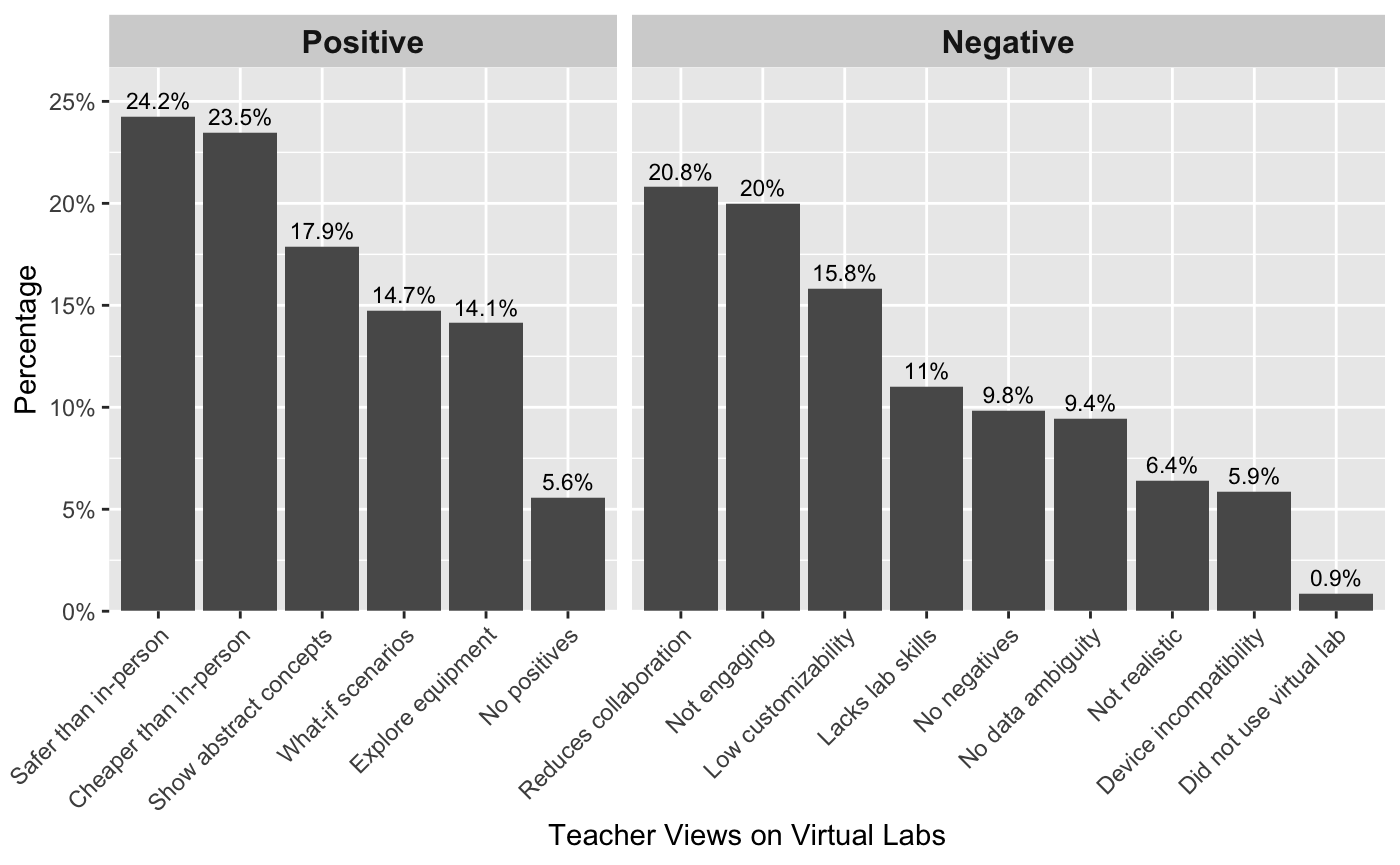
Centering Teachers’ Voices Design Guidelines for High School Laboratory Technologies
Elizabeth Childs, Jane E, Allison Okamura, James Landay
For decades, each “new wave” of educational technology—-computers, XR, now generative AI—-has promised transformation. Yet classrooms remain full of abandoned pilots and one-off demos. This study flips the lens: instead of evaluating technologies in isolation, it centers teachers’ voices about what actually works in high school science labs.
Through site visits, surveys, and follow-up interviews, we surfaced the tensions that derail adoption and translated them into design guidelines for classroom-ready tools.
Key Findings
Hands-on labs are still important part of laboratory learning. Virtual labs are seen as safer and cheaper, but teachers dislike them for being “not real,” unengaging, and poor at teaching lab skills. The ideal space for technology in educational labs is in augmentation, not replacement. Simulations that take away the ability to design experiments and collect data, instead enerating perfect results, undermine science practice. Teachers want technology to embrace error, not erase it. Technology can augment science practices by modeling contamination, variability, and ambiguity so students learn to reason about real data.
Math and literacy gaps are the hidden blockers to technology adoption. Half of teachers reported students struggling with algebra in labs; nearly a third cited reading barriers. They want tech that dynamically simplifies text, provides just-in-time scaffolds, and links visualizations to equations.
Technology can help create real-world connections. Teachers repeatedly emphasized that labs are most powerful when students can see the relevance of science beyond the classroom. While content mastery is important, many teachers described their ultimate goal as helping students transfer scientific reasoning into their own lives and communities. They feel technology can help connect science to everyday experiences and broader societal issues (e.g., climate change, health).
Educational laboratory tech needs to be more customizabile. Nearly all teachers reported adapting labs to student and classroom needs, but most technologies lock them into rigid representations (e.g., generic molecular models or symbols different than current curricula). Because labs are rarely “one-size-fits-all,” teachers need the agency to adapt technology just as easily as they can customize PowerPoints.
Summary of Design Guidelines
Overall, technology should support authentic, hands-on laboratory practices, while also scaffolding prior knowledge to be accessible for students with differing math and language skills. Allowing teachers to customize technology is also important, as they can best adapt it to suit student, classroom, and societal context.
| Category | Finding | Design Guideline |
|---|---|---|
| Supporting Next Generation Science Skills | Students struggle with lab skills and the ambiguity of empirical data. | Technology can augment lab skills by reflecting real tools and real errors. |
| Students struggle to design experimental methods. | Technology can support experimental design through guided exploration. | |
| Scaffolding Prior Knowledge | Students have limited prior knowledge in applying math and graphical analysis to lab data. | Dynamic visualizations can make math and data analysis accessible during labs. |
| Students' English and reading abilities can hinder their ability to engage in laboratories. | Technology should support differentiated language instruction. | |
| Supporting Real Experiences and Impacts | Personal relevance helps students find meaning in labs. | Technology should adapt to personal and classroom contexts to support every student. |
| Teachers desire students to be able to connect science to broader societal impacts. | Technology can help show the broader impacts of science. | |
| Collaboration, Adaption, and Engagement | Current laboratory technology reduces opportunities for student collaboration. | Technology should support authentic discussions and scientific collaborations. |
| Teachers struggle to adapt technology to fit their classrooms. | Technology needs customizable representations to support teacher agency in classroom integration. | |
| Students value engaging in physical, hands-on laboratories. | Technology should augment, not replace, hands-on experiences. | |
Technologies for science education often fail not because of weak pedagogy, but because they overlook teachers’ contexts, student diversity, and classroom realities. By centering teachers’ perspectives, this study argues for a shift from designing isolated prototypes toward tools that prioritize adaptability, contextual responsiveness, and teacher agency.